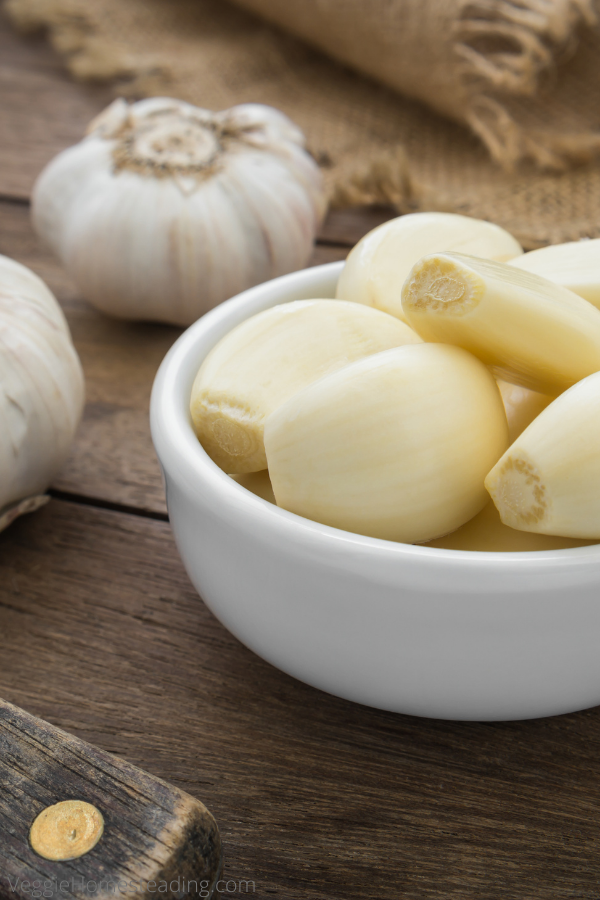Garlic is a bulb vegetable. It is grown much like an onion but is a different vegetable. These tips and information are perfect for planting and growing garlic in your garden or greenhouse.

Botanical Information: Allium sativum
Quick Facts:
When grown under the right conditions, garlic typically takes nine months to mature.
Varieties:

Starting:
Plant garlic in the fall three to eight weeks before the first autumn freeze.
Spacing:
Set cloves root side down 4-6″ apart in rows 1-1/2 to 2′ apart, and cover with 1-2″ of soil.
Companions and Enemies
There are quite a few plants that can help garlic grow. The most common are:
fruit trees
dill
beets
kale
spinach
potatoes
carrots
eggplants
On the other hand, there are a few that should not be planted next to garlic. This includes:
carrots
celery
onions

Watering :
Water every 3 to 5 days during bulbing (mid-May through June). If May and June are very dry, irrigate to a depth of two feet every eight to 10 days.
Light:
Garlic thrives in full sun in loose soil. Choose a well-drained garden bed that receives 6-8 hours of sunlight per day.
Pollination:
Garlic is typically pollinated by insects. Honey bees are great for pollinating garlic. If you are planting in a greenhouse, you can shake the plants or apply wind to help the pollination.

Common Problems
Basal Root
White Rot
Downy Mildew
Botrytis Rot
Penicillium Decay
Harvesting
When the lower two or three leaves turn yellow or brown, bulbs are ready to harvest. If you wait too long beyond this point, your bulbs won’t have as many protective layers around cloves, which means they won’t store well. At the same time, the remaining leaves will probably be showing yellow or brown tips
Storing & Preparing
Peeled garlic can be stored in the fridge for 10–14 days, while sliced or cut garlic can be refrigerated for 7–10 days. To keep them even longer, freeze them in a resealable bag or airtight container. Cooked onions can be stored for three to five days in your fridge or up to three months in your freezer.
When the lower two or three leaves turn yellow or brown, bulbs are ready to harvest. If you wait too long beyond this point, your bulbs won’t have as many protective layers around cloves, which means they won’t store well. At the same time, the remaining leaves will probably be showing yellow or brown tips


Leave a Reply